-
Patience is key: Rottweiler pups need time to learn commands. Be patient and give them a chance to understand.
-
Consistency is crucial: Regular training and consistent commands help build a strong foundation for your pup.
-
Celebrate every success: Acknowledge every small win to boost your pup's confidence and make training fun.
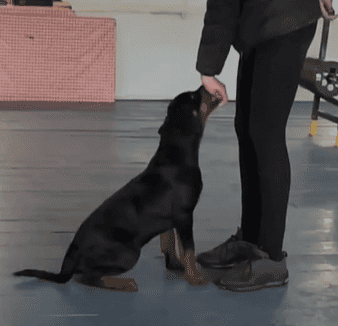
You’ve brought home your adorable Rottweiler puppy – congrats! Get ready for a whirlwind of puppy breath, clumsy paws, and endless love. But before you get lost in those puppy-dog eyes, let’s talk about training. Rottweilers are intelligent but can have a stubborn streak, so starting early with basic commands is key. Think of it like building a strong foundation for a lifetime of happy adventures together. Don’t worry, we’ll guide you through it step by step. And hey, who knows, you might even discover your inner dog whisperer along the way!
Gearing Up for Puppy School: Your Rottweiler Training Toolkit
Before we unleash those commands, let’s gather your Rottweiler training essentials. Think of it like preparing for an epic adventure – you wouldn’t set off without the right gear, right? Here’s what you’ll need to make this a pawsitive experience for both you and your fur-baby:
- Collar or Harness: A well-fitting collar or harness is a must-have. Make sure it’s snug but comfy – no one wants a fashion faux-paw!
- Leash: This is your lifeline for keeping your little explorer safe during those early adventures. Plus, it’ll come in handy when teaching those all-important leash manners.
- Treats: Ah, the magic of treats! These are your secret weapon for rewarding those training triumphs. The tastier, the better – think gourmet goodies for your furry gourmand.
- Clicker (optional): A clicker is like a magic wand for dog training. It helps you mark those “a-ha!” moments with precision.
- Quiet Environment: Find a familiar spot where your puppy can focus without distractions. Think “zen den” for your Rottweiler – a peaceful oasis where learning can blossom and where they won’t be tempted to turn your furniture into chew toys! Speaking of which, if you’re struggling with destructive chewing, the ASPCA (American Society for the Prevention of Cruelty to Animals) has some helpful tips!
With your toolkit assembled, you’re ready to embark on this exciting training journey with your Rottweiler pup! Get ready to unleash their potential and witness those tail-wagging triumphs.
Sit: The Foundation of Obedience
The “Sit” command is the cornerstone of obedience – it’s like teaching your Rottweiler pup the ABCs of good behavior. Plus, it’s incredibly handy for those moments when you need your pup to, well, sit still! Here’s how to make it happen:
- Lure and Learn: Hold a tasty treat close to your puppy’s nose – think of it as a magical magnet for their attention.
- Head Over Heels: Slowly move the treat over their head, encouraging them to follow it with their nose. As their head goes up, their rear will naturally go down.
- Mark the Moment: The second their bum touches the ground, say “Sit” in a clear, happy voice and give them the treat.
- Repeat and Fade: Repeat this a few times, then try it without the treat, using just your hand motion and the “Sit” cue. You’ll be amazed at how quickly they catch on!
-
Pro Tip: Keep those training sessions short and sweet, especially in the beginning. Puppies have short attention spans, so aim for 5-10 minutes of focused fun. And always end on a high note, leaving your pup eager for more!
Down (or Lay Down): Chill Out Time!
Once your Rottweiler pup has mastered the art of sitting, it’s time to introduce them to the joys of relaxation with the “Down” command, as highlighted by Maximum K9 Services. This is a super useful cue for those moments when you need your pup to take a chill pill (not literally, of course!). Here’s how to teach it:
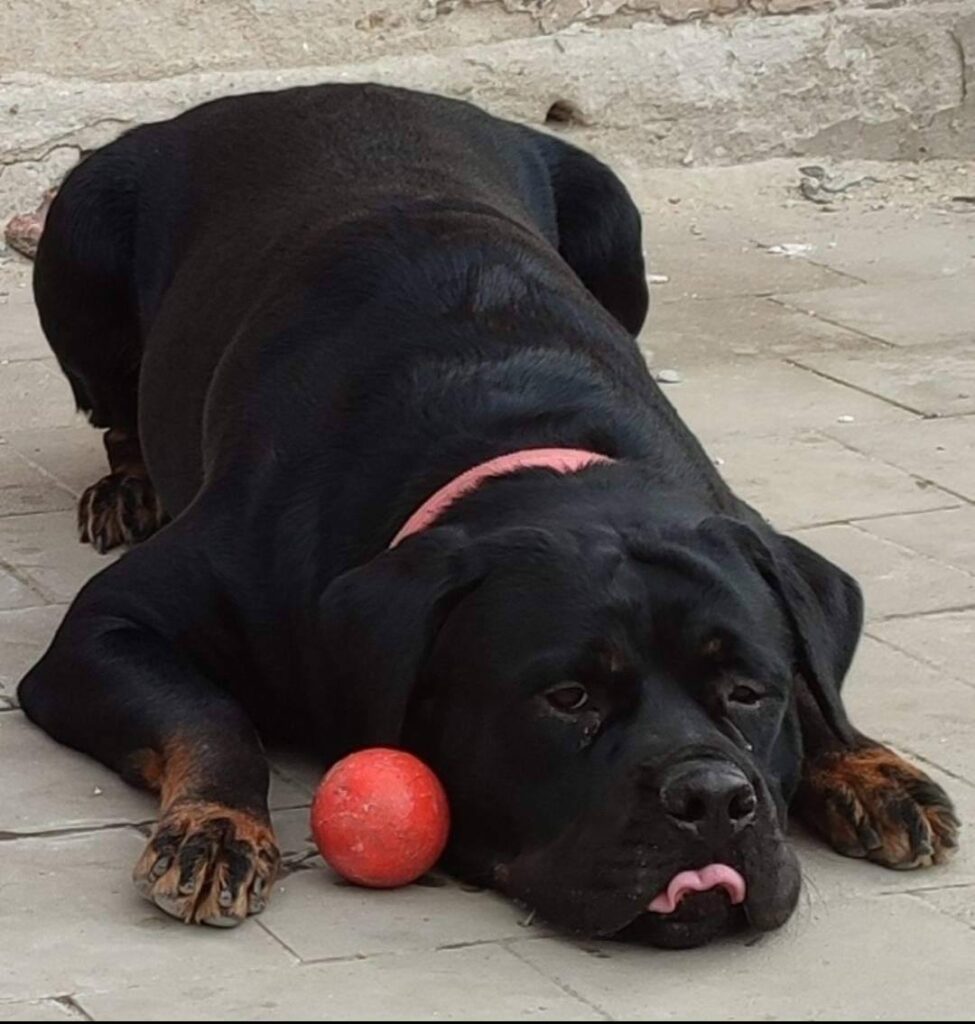
- Sit and Stay: Start with your puppy in a “Sit.” (See? Those early lessons are already paying off!)
- Lure the Lie Down: Hold a treat near their nose and slowly lower it to the ground. Their nose will follow that tasty treasure, and their body will naturally follow suit.
- Mark and Reward: As soon as their belly touches the ground, say “Down” in a calm, clear voice and give them the treat.
- Repeat and Fade: Repeat this a few times, then gradually phase out the treat lure. Use just your hand motion and the “Down” cue. They’ll be pros at chilling out in no time!
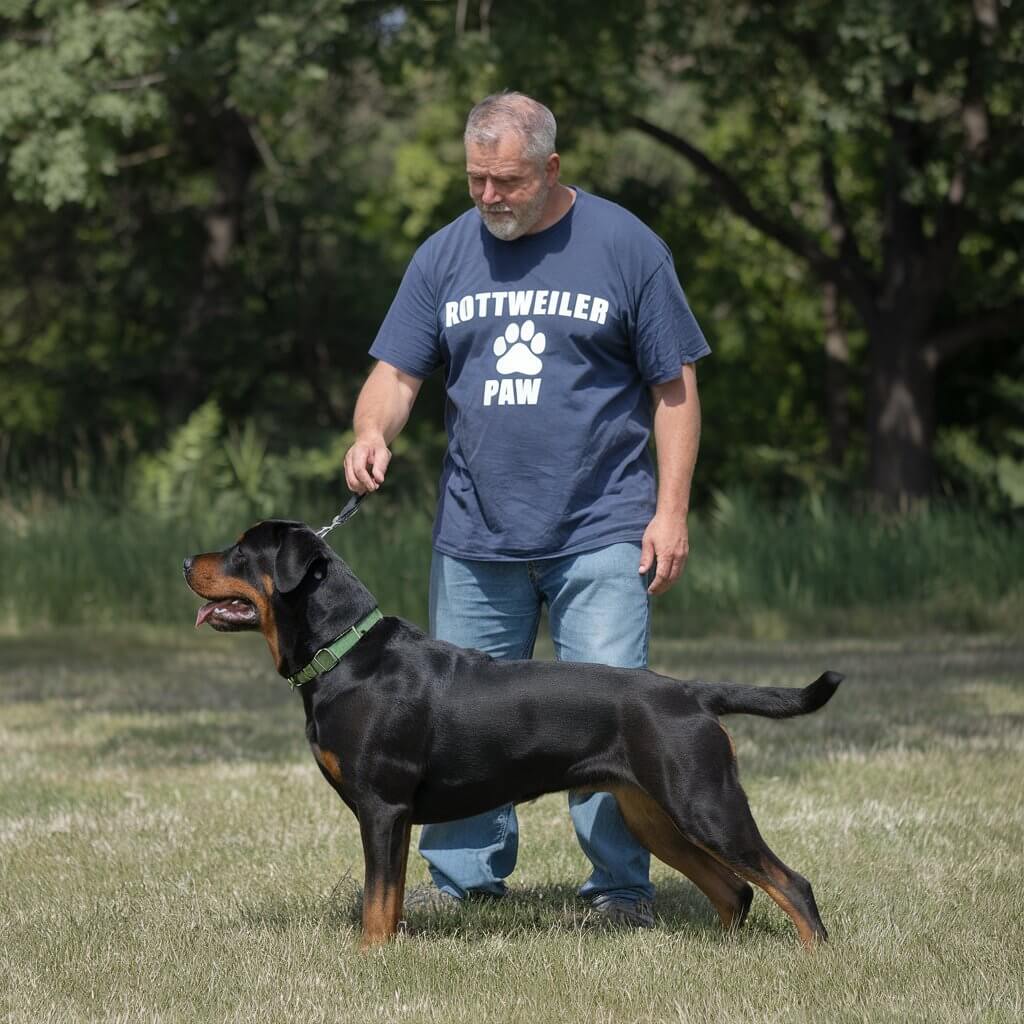
Rottweilers: these magnificent dogs boast a history as impressive as their muscular build. Descending from ancient Roman drovers, they’re renowned for their loyalty, strength, and protective instincts. But let’s be honest, sometimes those guarding instincts can go a little overboard (who knew the mailman could be so terrifying?!).
That’s where training comes in. It’s the key to unlocking your Rottweiler’s full potential and ensuring a happy, harmonious life together. Think of it as channeling their incredible energy and intelligence into positive behaviors.
-
Pro Tip: Avoid physically pushing your puppy into the "Down" position. Let them figure it out on their own with gentle guidance. This builds confidence and prevents any negative associations with the command.
Stay: The Art of Patience (for Both of You!)
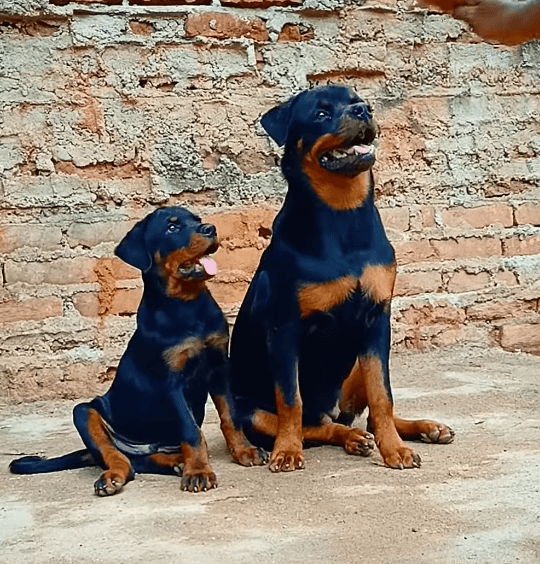
“Stay” is where things get really interesting! This command is like teaching your Rottweiler pup the power of self-control. Think of it as their superpower for navigating those exciting moments without turning into a furry tornado. Here’s the secret formula:
- Steady Start: Begin with your puppy in a “Sit” or “Down.” (They’re already becoming obedience superstars!)
- “Stay” Put: Say “Stay” in a calm, clear voice and hold your hand out like a stop sign. Channel your inner traffic guard!
- Baby Steps: Take a tiny step back. If they stay put (yay!), zoom back to them, give a treat, and release them with an enthusiastic “Okay!” or a similar word.
- Increase the Challenge: Gradually increase the distance and time. Remember, Rome wasn’t built in a day (and neither is a perfectly trained Rottweiler!). Patience and consistency are your superpowers here.
-
Pro Tip: If your pup breaks the "Stay," no worries! Just calmly return them to their starting position and try again with a shorter distance or duration. You'll get there!
Come: The Canine Bat-Signal!
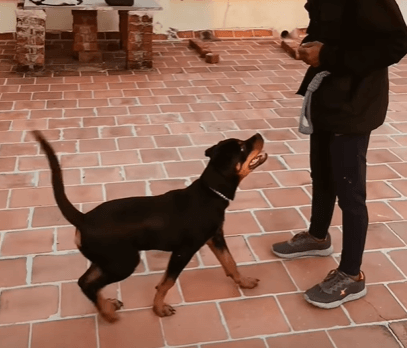
“Come” is the ultimate puppy recall – it’s like your very own canine Bat-Signal! Teaching your Rottweiler to come when called is not only essential for good manners but also for their safety. Imagine those off-leash adventures in the park – you’ll want to be confident that your pup will come running back to you when you call (even if there’s a squirrel involved!). Here’s how to make it happen:
- Safe and Secure: Start in a safe, enclosed area with your puppy on a leash. This prevents any runaway Rottie situations!
- Enthusiasm is Key: Say “Come” in your most enthusiastic voice (think game show host announcing a grand prize!). Pair it with a gentle tug on the leash to guide them towards you.
- Celebration Time: When they come running to you, shower them with praise and a tasty treat. Make them feel like they just won the puppy lottery!
- Increase the Challenge: Gradually increase the distance and practice off-leash in a secure area. Freedom! But remember, safety first.
-
Pro Tip: Always make "Come" a positive experience. Never call your puppy to you for punishment – that's like kryptonite to their recall superpowers!
Leave It: The "No-Touch" Zone
“Leave it” is a super important command that can save your Rottweiler from a whole lot of trouble (and maybe even a tummy ache!). It teaches them to resist the temptation of those forbidden treasures – think dropped food, enticing objects on walks, or that suspiciously delicious-smelling thing they found in the backyard. Here’s how to master this essential cue:
- Temptation Time: Place a treat on the floor and cover it with your hand. It’s like a mini game of “hide-and-seek” for your pup!
- “Leave It” Loud and Clear: Say “Leave it” in a firm but friendly voice. You’re the leader of the pack, and your pup needs to know you mean business!
- Persistence Pays Off: If they try to sneak a peek (or a nibble!), just cover it again. Don’t give in to those puppy-dog eyes!
- Reward the Resistance: When they finally look away from the hidden treasure, give them a treat from your other hand. See? Patience pays off!
- Up the Ante: Gradually increase the difficulty by uncovering the treat. Start with just a peek, then a little more, until they can resist even a fully exposed temptation.
-
Pro Tip: Always make "Come" a positive experience. Never call your puppy to you for punishment – that's like kryptonite to their recall superpowers!
When Puppy Training Gets Ruff: Troubleshooting Common Issues
Okay, let’s be real. Puppyhood isn’t always sunshine and rainbows. There might be a few bumps in the road (or should we say, puddles on the floor?). But don’t worry, we’ve got you covered! Even the most paw-some pups have their moments, and a little troubleshooting can go a long way.
The Distracted Pup: “Squirrel!”
Is your Rottweiler puppy more interested in chasing butterflies than mastering commands? Hey, we get it – the world is full of exciting smells and sights! But when it comes to training, focus is key. Here are a few tricks to keep those furry brains engaged and those puppy eyes on the prize (aka, you!):
- Short and Sweet Sessions: Keep those training sessions short and sweet – think 5-10 minutes of focused fun. No puppy wants to sit through a lengthy lecture, especially when there are squirrels to chase and belly rubs to be had!
- Treat Power: Break out those super-duper treats – the kind that make their tails wag like crazy. A little gourmet motivation goes a long way. Think tiny pieces of steak, chicken, or cheese – yum!
- Minimize Distractions: Find a quiet spot where your pup can focus on you and those tasty rewards. No squirrels allowed! (Okay, maybe just a few squirrels…)
- Mix It Up: Keep things interesting by varying your training exercises and incorporating games. A little variety keeps those puppy brains engaged and prevents boredom. Think “hide-and-seek” with treats or a quick game of tug-of-war between commands.
Remember, training should be fun for both you and your pup. By keeping things engaging and rewarding, you’ll have your Rottweiler mastering those commands in no time!
The Nippy Nuisance: “Ouch! Those Teeth Are Sharp!”
Ah, puppyhood! A time of adorable clumsiness, endless cuddles, and… those needle-sharp puppy teeth! Rottweiler pups can be a bit mouthy, especially when they’re teething or just feeling playful. But don’t worry, you can teach those little chompers some manners with a few gentle guidance and a sprinkle of patience.
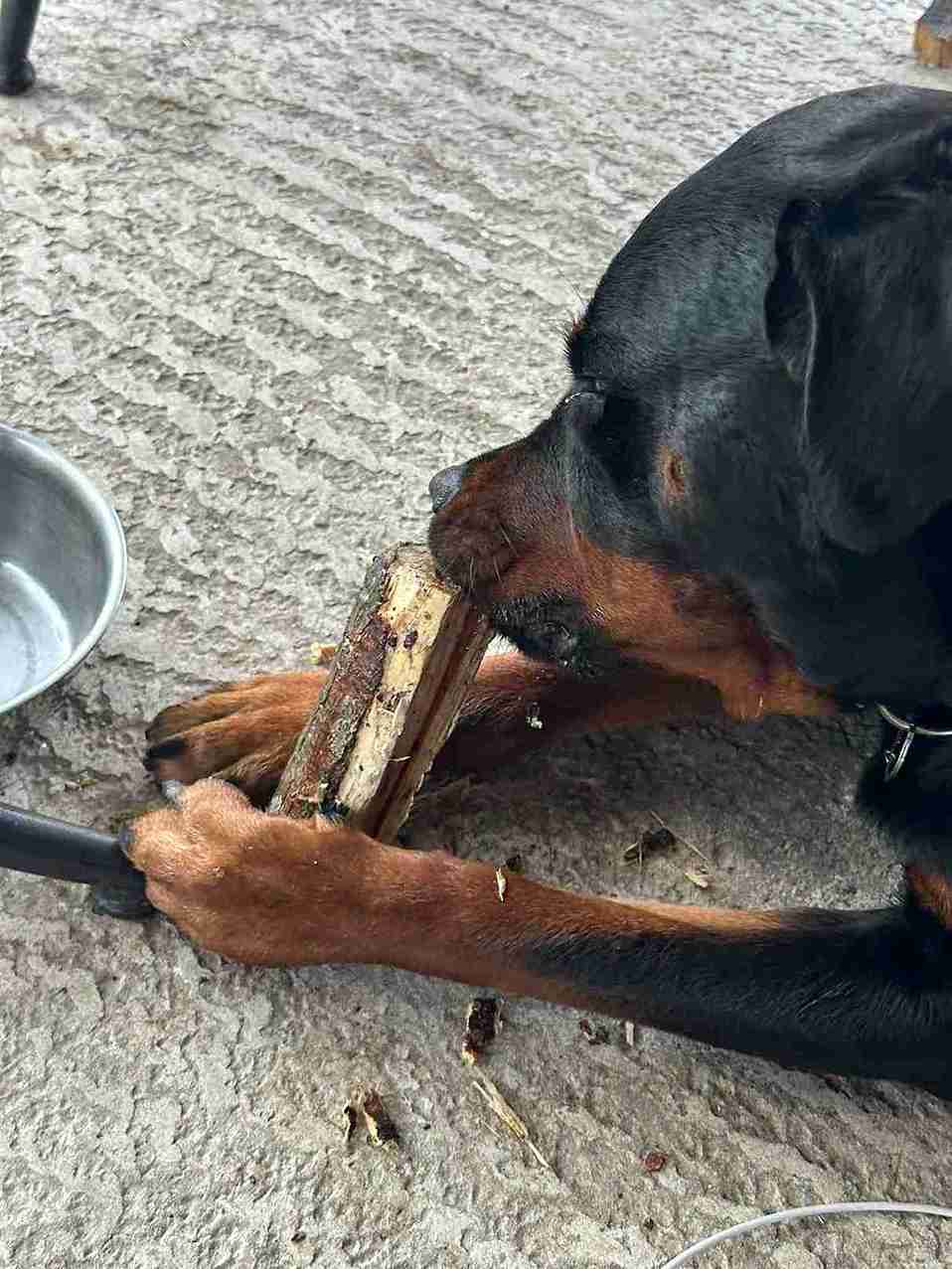
Redirect Those Playful Paws:
- Toy Swap: When those little teeth start nibbling on your fingers or toes (ouch!), quickly redirect their attention to an appropriate chew toy. It’s like saying, “Hey, those chompers are for toys, not for humans!” A durable chew toy or a Kong filled with peanut butter can work wonders.
- “Leave It” to the Rescue: Remember that awesome “Leave it” command we taught you? Now’s the time to put it to good use! When your pup starts getting nippy, calmly say “Leave it” and offer them a toy instead. They’ll soon learn that hands are for petting, not chewing.
- Time Out: If the nipping persists, a short time-out in their crate can help them understand that nippy behavior means playtime is over. But remember, the crate should always be a positive space, not a punishment zone. Think of it as a brief pause to reset and recharge.
Why Nipping Happens:
- Teething Troubles: Those little teeth can be a source of discomfort for your pup, and chewing helps relieve the pressure. Make sure they have plenty of safe and appropriate chew toys to gnaw on.
- Playful Exploration: Puppies explore the world with their mouths, and sometimes that includes your hands and feet! Gentle guidance and redirection will help them learn what’s okay to chew on and what’s off-limits.
- Attention Seeking: Sometimes, nipping can be a way for your pup to get your attention (even if it’s not the kind of attention they want!). Make sure you’re providing plenty of positive attention through play, cuddles, and training.
With a little patience and consistency, you can teach your Rottweiler pup to keep those sharp teeth to themselves and enjoy more gentle interactions. Remember, those nippy days won’t last forever – soon enough, those puppy teeth will be replaced with a strong, healthy adult set.
The Accidental Artist: “Oops, I Did It Again!”
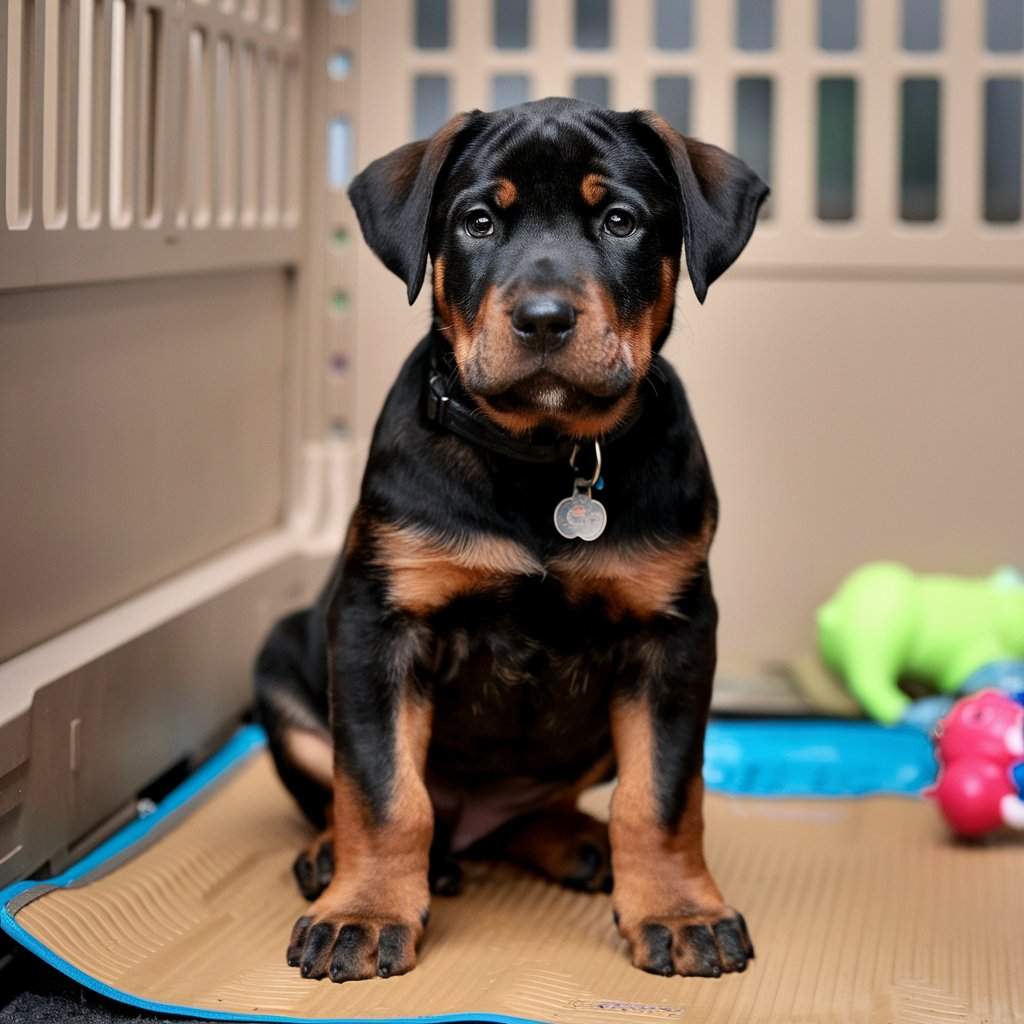
Let’s face it, even the most paw-some pups have their “oops” moments. Potty training can be a bit of a rollercoaster ride, with some unexpected twists and turns (and maybe a few puddles) along the way. But don’t worry, every puppy parent goes through it! Here’s how to handle those little accidents like a pro and keep your house smelling fresh as a daisy:
- Potty Break Patrol: Puppies, especially those energetic Rottweilers, have tiny bladders and even tinier attention spans! Frequent potty breaks are a must, especially when they’re young. Think of it like this: you wouldn’t want to hold it for hours on end, and neither does your furry friend. Aim for potty breaks every 1-2 hours, especially first thing in the morning, after naps, after meals, and before bedtime. A good rule of thumb is to take them out every time they transition from one activity to another (like from playing to napping).
- Enzyme Cleaner to the Rescue: When accidents do happen (and they will!), don’t just mask the odor with regular cleaners. Enzyme cleaners are your secret weapon! They work like magic to break down those pesky odor-causing molecules, leaving your home smelling fresh and preventing your pup from being drawn back to the scene of the crime. Trust us, your nose (and your Rottie’s nose) will thank you!
- Crate Training Champion: Remember that cozy crate we talked about? It’s not just for naps and relaxation – it’s also a potty training superstar! Puppies instinctively avoid soiling their sleeping area, so a crate helps them learn to hold it until it’s potty time. Plus, it taps into those natural denning instincts that Rottweilers have.
-
Pro Tip: If you're struggling with potty training your Rottweiler, don't hesitate to seek help from a professional dog trainer or your veterinarian. They can offer personalized advice and support to get you and your pup on the right track. Sometimes, a little expert guidance can make all the difference!
Remember, accidents are a normal part of puppyhood. With patience, consistency, and the right tools, you’ll have your Rottweiler pup mastering those potty breaks in no time. And hey, who knows, maybe you’ll even become a pro at deciphering those subtle “gotta go” signals!
The Velcro Pup: "Separation Anxiety Struggles"
Ah, the Velcro pup! That adorable Rottweiler who sticks to you like glue and throws a puppy tantrum the moment you leave their sight. Separation anxiety is a common challenge for many pups, but don’t worry, you can help your little shadow overcome those separation woes and gain some independence (without sacrificing those cuddle sessions, of course!).
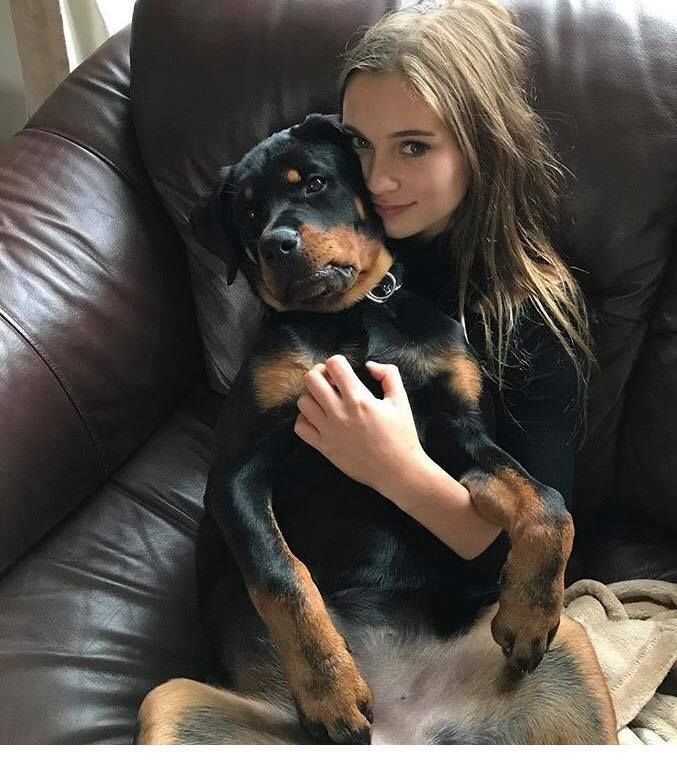
Creating a Cozy Haven:
- Crate Training Comfort: Remember that awesome crate we talked about? It’s not just a potty training tool – it can also be a cozy haven for your pup, providing a sense of security when you’re not around. Think of it as their own little doggy apartment where they can relax and unwind. Gradually increase the time they spend in their crate, starting with short periods and gradually working your way up. Make it extra comfy with a soft blanket and a favorite chew toy.
- Independent Playtime: Encourage independent playtime with engaging toys and puzzles. This helps them learn to entertain themselves and feel comfortable when you’re not by their side. Puzzle feeders or interactive toys can keep those Rottweiler brains busy and prevent boredom.
- Calm Departures and Arrivals: Avoid making a big fuss when you leave or return. This helps your pup understand that your absence is no big deal. A calm “See ya later, pup!” and a relaxed greeting when you return can work wonders.
Why Separation Anxiety Happens:
- Puppyhood Anxieties: It’s natural for puppies to feel a bit anxious when separated from their family. They’re still learning about the world and building their confidence.
- Breed Traits: Rottweilers are known for their loyalty and attachment to their families, which can sometimes make them more prone to separation anxiety.
- Past Experiences: If your Rottweiler has had negative experiences with being alone in the past, they might be more likely to develop separation anxiety.
With patience, consistency, and a sprinkle of love, you can help your Rottweiler pup overcome those separation anxieties and become a confident, independent companion. Remember, a little alone time can be good for both of you – it gives you a chance to recharge and your pup a chance to embrace their inner ‘solo adventurer’! For more in-depth information on separation anxiety and how to manage it, check out this article from VCA Animal Hospitals.
Want to dive deeper into those first crucial months of puppyhood? Check out our comprehensive guide to Rottweiler Puppy Training: Your First 6 Months. It’s packed with expert tips and tricks to help you navigate those early days and set your Rottie up for success!
Graduation Day: You've Got This, Puppy Parent!
High paws! You’ve made it to the end of our Rottweiler training boot camp. Give yourself a pat on the back (and maybe a treat for your pup, too!). Remember, training your Rottweiler puppy is a marathon, not a sprint. There will be moments of pure joy, moments of frustration, and maybe even a few moments where you question your sanity (we’ve all been there!).
With a little effort, a whole lot of love, and a sprinkle of those super-duper treats, you’ll have a well-mannered, obedient Rottweiler by your side in no time. Now go out there and rock that training! Your furry companion is waiting to unleash their full potential.
FAQs: Your Burning Questions Answered!
When should I start training my Rottweiler puppy?
You can start basic training as soon as you bring your puppy home, typically around 8 weeks old.
What if my puppy doesn't respond to treats?
Try using a different type of reward, such as praise, a favorite toy, or a short play session.
How do I handle accidents during potty training?
Clean up accidents thoroughly with an enzyme cleaner and increase the frequency of potty breaks.
What if my puppy seems scared of the crate?
- Introduce the crate gradually and make it a positive experience with treats and toys. Never use the crate as punishment.
Want to go beyond the basics? Our comprehensive Rottweiler puppy training guide covers everything you need for those crucial first six months! From housebreaking and crate training to socialization and preventing puppy biting, we’ve got you covered. Check out “Rottweiler Puppy Training: Your First 6 Months (A Complete Guide)” to raise a happy, well-behaved Rottie pup!


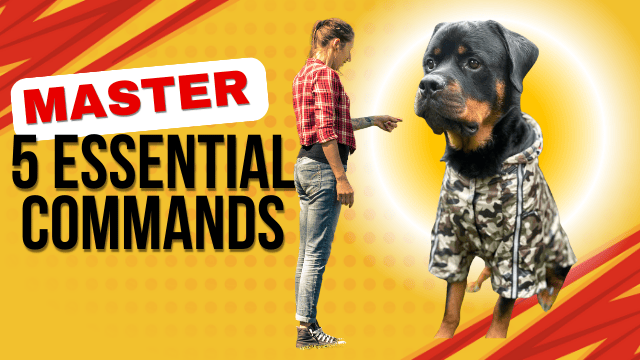


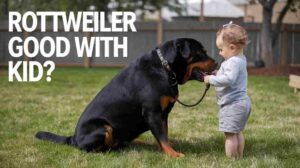

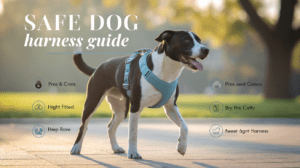
Pingback: Rottweiler Puppy Training: Your First 6 Months (A Complete Guide)
Pingback: Rottweiler Training: The Complete Guide [Expert Tips & Techniques]